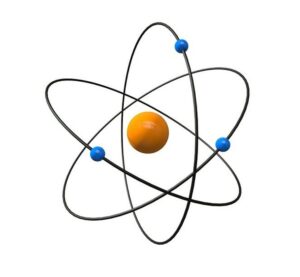In the present article, we are focussing on discussing nuclear fusion examples and their detailed explanations.
In the atmosphere, we can observe a reaction that compasses any two atoms that stick or join together so that they end up forming different atomic nuclei, which are one or more in number, and also some subatomic particles, namely protons and neutrons.
In the upcoming section, let us focus on the nuclear fusion examples.
Nuclear fusion examples
Sun’s core
The best description of the fusion can be seen to be taking place in the sun’s core. It is found that at the sun’s core, the temperature is nearer to 15 million degrees. Celsius; along with this incredibly high temperature, it also possesses very high pressure. Due to these conditions, helium is formed by combining two isotopes of hydrogen, deuterium and tritium. There is a production of an incredibly large amount of heat, one of the forms of energy. On average, the hydrogen that converts into helium is about 600 million tons per unit second. Hence, it is one of the nuclear fusion examples.
Hydrogen fusion reactions
It is one of the nuclear fusion examples. There is a smashing or colliding of hydrogen atoms together that are comparatively lighter atoms, which is followed by the generation of energy in any of its forms. This phenomenon is supported by the existence of very high pressure and temperature in the stars. Hydrogen is known to be the lightest in the periodic table. At the same time, the helium formed due to the fusion of hydrogen isotopes is known to be the lightest element next to hydrogen. Prior to and after the reaction, there is an observable difference in the nuclear binding energy, which in turn pave a way to a difference in the masses.
Fusion of deuterium
Deuterium is also regarded as heavy hydrogen. There is a formation of a helium nucleus by combining two nuclei of deuterium together. It is also found that there is a large amount of energy (In the form of heat) that is excavated during this fusion. The energy generated results from a mass transformation in the form of energy which is said to be lost during the process. This is under the governance of Einstein’s formula. It is one of the nuclear fusion examples. Following is the reaction that depicts the above-mentioned nuclear fusion.
1H2 + 1H2 → 2He4 + Energy
Fusion of deuterium and tritium
Let us now aim to analyze the fusion reaction by combining deuterium and tritium together. Basically, they are made to come together and recombine in order to bring helium along with a fast neutron into the picture in the form of component parts. We can observe a release of kinetic energy possessed by the neutron, which results from the conversion of lost mass during the assembling of heavier isotopes. It is one of the nuclear fusion examples.

Formation of elements
It is one of the nuclear fusion examples. Elements found to exist in the periodic table, such as iron and nickel, can also be produced as an end product of nuclear fusion. Such an element formation is usually accompanied by the giving up of energy, or it can be regarded as an exothermic process. Whereas there also appears to be a case where the process shall be endothermic, this is possible when the fusion occurs in the vicinity of nuclei of comparatively heavier mass.
Supernova
Supernova is one of the astrophysical events. It is basically due to the energy provided by the supernova, and the fusion process occurs nuclei that are smashed together. This provision of sufficient energy results in the production of elements and synthesis of a whole new nucleus by combining nuclei. It is one of the nuclear fusion examples.

Stellar nucleosynthesis
It is basically observed to be the prime source of power in the case of stars, even the sun. It is one of the nuclear fusion examples. Here, there is a smashing or colliding of hydrogen atoms that are comparatively lighter atoms together, which is followed by the generation of energy in any of its forms. This phenomenon is supported by the existence of very high pressure and temperature in the stars. It is further followed by the stellar heat and light.
Thermonuclear fusion
When the matter is heated enough to become plasma, the thermal kinetic energy contained by the particles is found to increase; such particles are vulnerable to getting fused as they undergo collisions in between themselves. An incredible quantity of energy can be witnessed to be let out, which can even be uncontrollable in the case of thermonuclear weapons. In order to achieve a thermonuclear fusion that can be controlled, the use of magnetic fields is considered so that it will be possible for plasma confinement. It is one of the nuclear fusion examples.
Colliding beam fusion
It covers the light-ion fusion reactions, which are induced by the particles possessing enough kinetic energies contributed by the particle accelerators. The fusion, in this case, is basically achieved by accelerating the light ions, which is done using electrodes (a pair). The voltage between these electrodes can even be as less as 10kv in order for the fusion to occur. In general, two ion streams are made to accelerate towards each other so that a beam-beam fusion takes place.
Neutron generators
Neutron generators are basically small devices that are installed as particle accelerators. These devices contain ions of deuterium and tritium gas which can be accelerated against certain targets which also possess the same gas so that the fusion can take place along with the production and release of neutrons. It is one of the nuclear fusion examples.
Muon-catalyzed fusion
It is one of the nuclear fusion examples. At ordinary temperatures, the fusion process that is catalyzed by muons is believed to take place. But, there is the requirement of high energy for the production of muons which is even more when compared to the energy released during this reaction.
Stars
Here, there is a smashing or colliding of hydrogen atoms together that are comparatively lighter atoms, which is followed by the generation of energy in any of its forms. This phenomenon is supported by the existence of very high pressure and temperature in the stars. Hydrogen is known to be the lightest in the periodic table. At the same time, the helium formed due to the fusion of hydrogen isotopes is known to be the lightest element next to hydrogen. Prior to and after the reaction, there is an observable difference in the nuclear binding energy, which in turn make a way for a difference in the masses.

On Earth
On earth, the fusion reaction can be achieved by colliding or smashing two hydrogen isotopes, namely deuterium and tritium, which then result in the formation of helium. We know that hydrogen is simply the combination of a single proton and an electron. At the same time, an additional neutron is witnessed to be present in the case of deuterium. Similarly, tritium is believed to contain two extra neutrons compared to hydrogen.

Seawater
In common seawater, we can say by examining that, in every 6,500 parts of water, there is one part of deuterium. This can remove the issue of non-uniform distribution of fuel resources geographically as there is the availability of deuterium globally. This is the evidence for the existence of fuel that enables fusion if there is a possibility of water. It is one of the nuclear fusion examples.

Inside the atom
In an atom, a plasma or an ionized gas is created by extracting electrons from an atomic nucleus. Here, it has been observed that the nuclei that are charged positively are maintained to be far from one another due to the presence of forces, mainly the electrostatic force in between them. Also, different elements and nuclei are produced by fusing some of the lighter nuclei or elements present inside the atom. This nuclear fusion is capable of providing an incredibly enormous quantity of energy.

Frequently asked questions| FAQS
How can you generate energy by fusion?
In stars, it is found that the fundamental energy-producing process is nothing but fusion.
It is also found that there is a large amount of energy (in the form of heat) that is excavated during the phenomenon of fusion. The energy generated results from the mass transformation in the form of energy which is said to be lost during the process. This is under the governance of Einstein’s formula.
What is found to be happening during a nuclear fusion?
In the case of nuclear fusion, Basically, nuclei are made to come together and recombine.
In the atmosphere, we can observe a reaction that compasses any two atoms that stick or join together so that they end up forming different atomic nuclei, which are one or more in number, and also some subatomic particles, namely protons and neutrons.
Which of the natural phenomenon best depicts the fusion?
The best description of the fusion can be seen to be taking place in the sun’s core.
It is found that at the sun’s core, the temperature is nearer to 15 million degrees. Celsius; along with this incredibly high temperature, it also possesses very high pressure. Due to these conditions, helium is formed by combining two isotopes of hydrogen, deuterium and tritium. There is the production of an incredibly large amount of heat, one of the forms of energy.
On average, the amount of hydrogen that converts into helium is about 600 million tons per unit second.
How can you achieve nuclear fusion on the earth?
We know that hydrogen is simply the combination of a single proton and an electron.
On earth, the fusion reaction can be achieved by colliding or smashing two hydrogen isotopes, namely deuterium and tritium, which then result in the formation of helium. An additional neutron is witnessed to be present in the case of deuterium. Similarly, tritium is believed to contain two extra neutrons in comparison with hydrogen.
Also Read:
- Is nuclear fusion renewable
- Nuclear fusion in the sun
- Is nuclear fusion possible
- Nuclear fuels examples
- When does nuclear fusion begin
- Nuclear fusion in stars
- Nuclear reactions examples
- Nuclear fusion waste
- Nuclear fusion process
- Nuclear fission examples
Hi…..I am Harshitha H N. I have completed my master’s in Physics from the University of Mysore with a specialization in Nuclear physics. I enjoy exploring new things in my free time. My article always aims to develop and bring some value to the table with relevant topics.
Let’s connect through LinkedIn-